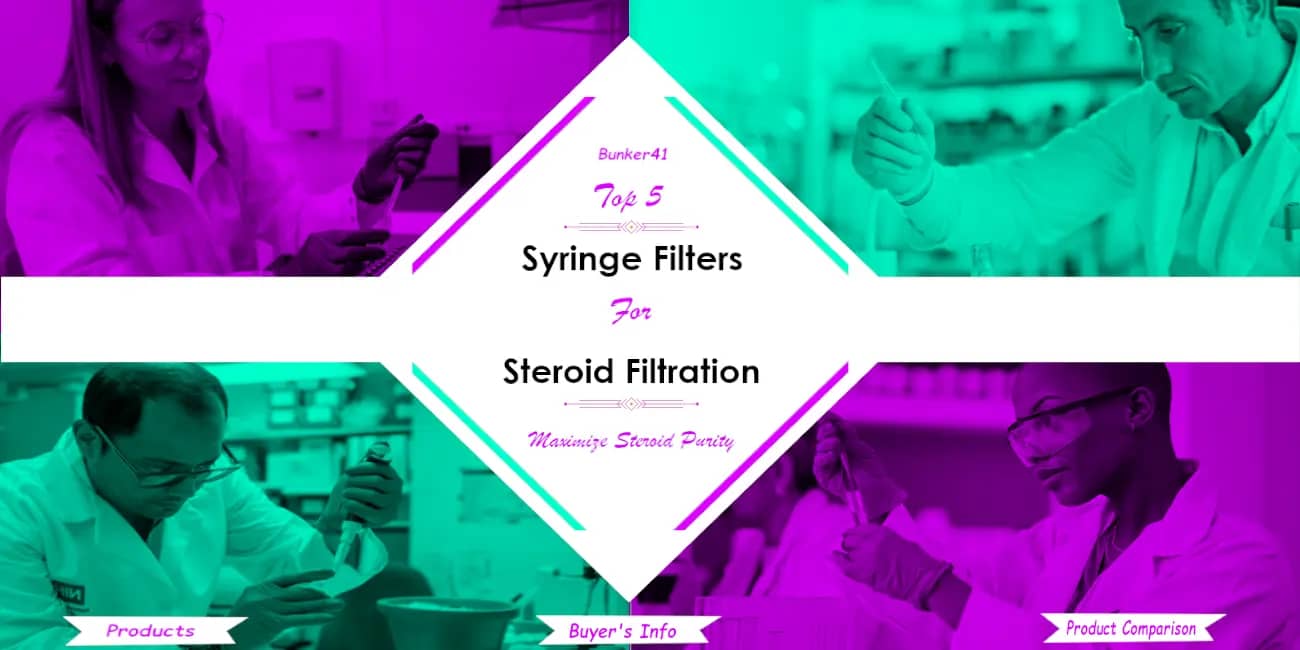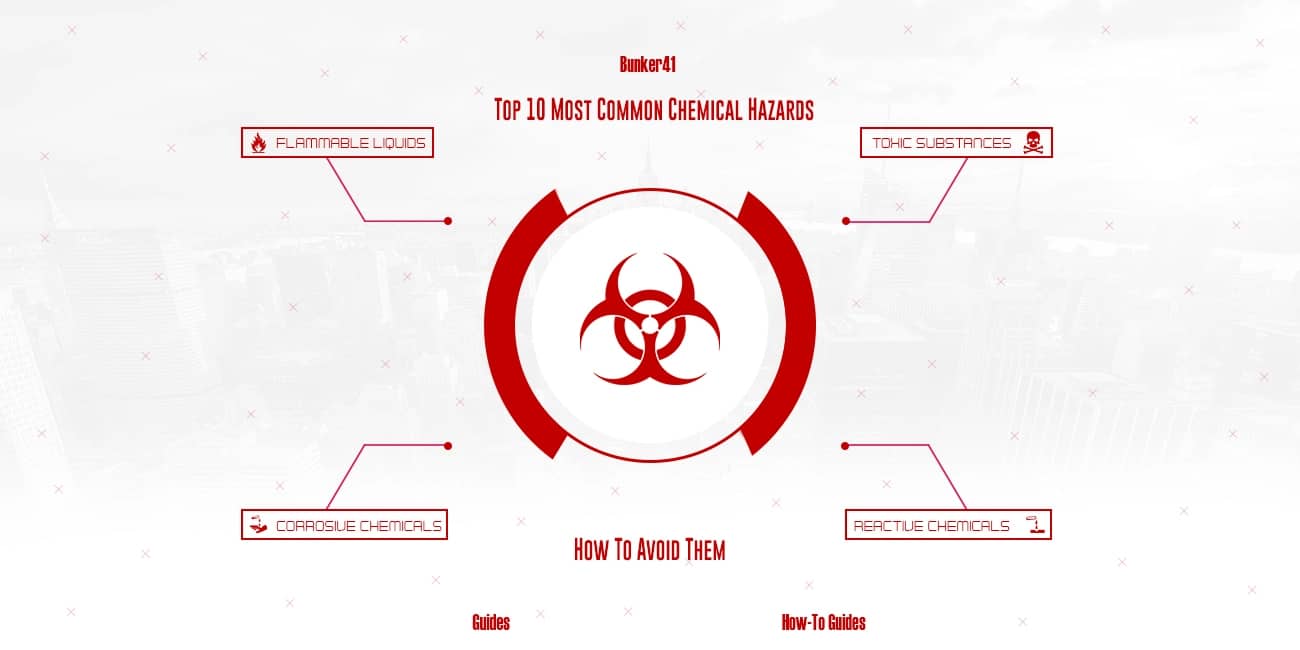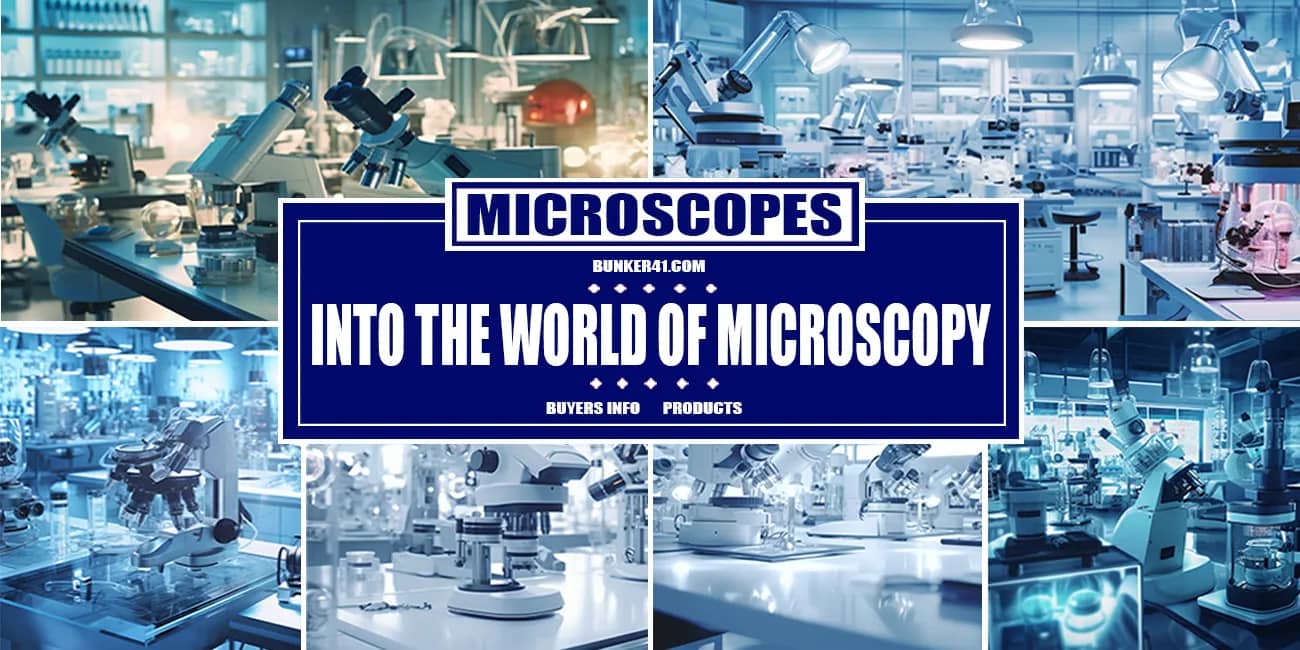Your cart is currently empty!

What Is Chemical Analysis Used For? All You Need To Know In 2025
Introduction

Chemical analysis stands as a cornerstone of modern science and industry, integral to unraveling the complexities of matter. At its core, it encompasses a range of methods used to determine the composition and concentration of chemical substances, playing a pivotal role in diverse fields from pharmaceuticals to environmental monitoring. Whether employing classical techniques like flame tests and titrations or leveraging advanced instrumental analysis such as gas chromatography and
thermogravimetric analysis, chemical analysis provides essential insights into both qualitative and quantitative aspects of materials. This multifaceted process includes both qualitative analysis, which identifies the presence of specific compounds, and quantitative chemical analysis, which measures their concentration. Techniques in chemical analysis are crucial for quality control in manufacturing, ensuring product consistency and safety, while also aiding in research and development through
precise measurement of chemical reactions and systematic error analysis. In everyday life, chemical analysis impacts everything from detecting air pollution to ensuring the purity of substances in consumer products. As technology advances, new methods and tools continue to enhance the precision and scope of chemical analysis, addressing contamination issues, optimizing reverse engineering processes, and improving the overall quality of data. By employing a combination of classical and modern techniques, scientists and engineers can explore the intricate world of chemical
compounds, from simple elements to complex organic molecules, thereby advancing knowledge and innovation across multiple industries.
Key Takeaways
Defining Chemical Analysis: A Fundamental Overview


Chemical analysis is a scientific discipline dedicated to identifying and quantifying the components of chemical substances. This field is crucial for understanding the composition of materials, whether they are pure substances or complex mixtures, and it employs a diverse array of techniques to achieve accurate results. At its essence, chemical analysis can be divided into two primary types: qualitative and quantitative. Qualitative analysis determines the identity of
chemical components, often through methods such as flame tests and classical techniques, while quantitative analysis measures the concentration of these components, using advanced methods like gas chromatography and thermogravimetric analysis. The process of chemical analysis involves several steps, including sample preparation, separation, and detection, which are carried out using both classical methods and sophisticated instrumental analysis. Analytical chemistry plays a critical role here, utilizing both classical
techniques and modern instrumental methods to address contamination issues, analyze small samples, and conduct chemical testing with precision. The importance of chemical analysis is evident across various industries, from ensuring quality control in manufacturing to monitoring air pollution and studying chemical reactions. By combining different analytical techniques and addressing systematic and random errors, scientists can derive meaningful data, determine the identity and quantity of substances, and ensure the reliability of their results. This field not only supports research and development but also provides
essential insights into everyday life, influencing everything from environmental protection to product safety and innovation.
What Is Chemical Analysis Used For In Various Fields

Chemical analysis is a linchpin in a multitude of industries, serving as a critical tool for ensuring safety, quality, and innovation across diverse domains. In the realm of pharmaceuticals, quantitative chemical analysis and qualitative analysis are indispensable for drug development, where precise determination of active ingredients and impurities is crucial for efficacy and safety. Similarly, in environmental science, chemical testing methods like gas chromatography
and thermogravimetric analysis are employed to monitor air pollution and assess contamination issues, ensuring compliance with environmental regulations and protecting public health. The manufacturing industry relies heavily on chemical analysis for quality control, utilizing classical methods and modern instrumental techniques to verify the composition of materials and detect deviations that could impact product quality. In the food and beverage sector, chemical analysis methods are applied to ensure the safety and authenticity of products, from
detecting adulterants to confirming nutritional content. Additionally, chemical analysis plays a vital role in materials science and engineering, where it supports reverse engineering efforts, aids in the selection of materials, and helps in understanding chemical reactions and interactions at a granular level. With advancements in analytical chemistry, new methods continue to evolve, enhancing the precision of analyses and expanding their applications. From ensuring the purity of chemicals and materials to contributing to innovations in various fields, the role of chemical analysis is both fundamental and far-reaching,
driving progress and maintaining standards across many critical sectors.
Understanding Chemical Analysis: The Basics


Chemical analysis is a methodical process used to identify and quantify the components of substances, whether they are pure compounds or complex mixtures. At its core, chemical analysis involves both qualitative and quantitative techniques. Qualitative analysis is concerned with determining the identity of chemical components, often through methods such as the flame test and various classical techniques. Quantitative chemical analysis, on the other hand, focuses on
measuring the concentration of these components, using sophisticated methods like gas chromatography and thermogravimetric analysis to obtain precise data. The process typically begins with sample preparation, followed by the selection of appropriate chemical analysis methods to separate and detect the components. Analytical chemistry integrates these methods with both classical and modern instrumental techniques to ensure accuracy, minimize systematic and random errors, and address contamination issues.
These techniques are crucial in a variety of applications, from quality control in manufacturing to environmental monitoring of air pollution. By analyzing chemical samples and their reactions, scientists can determine the composition and concentration of substances, thus providing valuable insights into their properties and behaviors. Whether for research, industry, or everyday life, understanding chemical analysis and its methodologies is essential for ensuring the reliability and relevance of analytical results.
Chemical Analysis: Identifying and Measuring Components
Let’s look at the main techniques used in chemical analysis:
Understanding Chemical Analysis Techniques
Scientists use many techniques to test and analyze substances. Some common ones are:
| Analysis Type | Primary Purpose | Key Technique |
|---|---|---|
| Qualitative | Identify Chemical Components | Spectrometry |
| Quantitative | Measure Chemical Quantities | Titration |
The choice of technique depends on the sample and the research goals. Modern tools allow for detailed analysis of small samples. They give quick and accurate results.
“Chemical analysis is the detective work of science, uncovering hidden molecular mysteries.”
Chemical analysis is vital in many areas. It’s used in environmental monitoring, pharmaceutical research, and quality control. It gives us the data we need to make smart decisions.
Chemical Analysis Explained: Quantitative vs. Qualitative
Chemical analysis is the backbone of modern chemistry, shaping everything from scientific research to quality control in industrial settings. But what exactly is chemical analysis, and why is it important? More specifically, what is the difference between quantitative and qualitative analysis? Let’s break it down into a detailed and in-depth list to understand the critical role of these two approaches.
1. Understanding Chemical Analysis
Chemical analysis is a process used to determine the composition of materials. It involves identifying and quantifying the different components present in a chemical sample. There are different types of analyses, but broadly speaking, they fall under two main categories: qualitative and quantitative.
Chemical analysis methods are employed across industries, from pharmaceuticals to environmental testing. Whether it’s ensuring the purity of drinking water or testing for contamination in products, chemical analysis is crucial for maintaining safety and quality.
2. Differences Between Qualitative and Quantitative Analysis
3. Techniques for Chemical Analysis
Different analytical techniques and methods are used depending on whether the analysis is qualitative or quantitative.
4. The Process of Chemical Analysis
The chemical analysis process involves multiple steps, including sample preparation, selection of an appropriate chemical analysis method, actual analysis, and interpreting results. Here’s a closer look:
5. Practical Uses of Chemical Analysis
Chemical analysis is used for a wide range of applications in everyday life and industry. Let’s highlight some key areas:
6. Chemical Analysis in Analytical Chemistry
In analytical chemistry, qualitative and quantitative chemical analysis often go hand in hand. For instance, during chemical testing of an industrial product, qualitative analysis can identify contaminants, while quantitative analysis determines their concentrations. This combination allows for a comprehensive understanding of the sample’s chemical makeup.
7. Analytical Techniques for Small Samples and Complex Compositions
When dealing with small samples or materials of complex composition, careful techniques must be used to obtain reliable results. Microanalysis and modern instrumental methods, such as high-performance liquid chromatography (HPLC), allow for precise quantitative analysis, even when dealing with tiny quantities or intricate mixtures.
8. Overcoming Errors in Chemical Analysis
In both qualitative and quantitative analysis, errors such as systematic errors and random errors can impact results. Careful calibration, control samples, and quality control protocols help minimize errors and improve the reliability of the data.
9. Everyday Life and Industries
Chemical analysis is everywhere in everyday life—from determining the nutritional content of foods to monitoring air pollution levels. In industries such as pharmaceuticals, petrochemicals, and food production, chemical analysis ensures that critical standards are met, and consumer safety is upheld.
Final Thoughts
Chemical analysis—whether qualitative or quantitative—is a fundamental aspect of chemistry that serves diverse roles, from quality control to research and environmental protection. Both approaches offer different insights into the composition and quantity of chemical components, making them indispensable tools for scientists and engineers. Whether you need to identify what chemicals are present in a mixture or quantify their amounts, mastering both qualitative and quantitative analysis techniques is key. In the end, chemical analysis is not just about testing samples in a laboratory; it is a crucial process that
affects our health, our environment, and our industries every day.
Understanding Different Analytical Techniques
Today, we have many advanced methods for chemical analysis:
Key Methods in Chemical Analysis
Chemical analysis encompasses a suite of methodologies employed to identify and quantify the chemical constituents of a sample, serving as a cornerstone in fields such as quality control, environmental monitoring, and product development. The primary approaches in chemical analysis are qualitative and quantitative analyses. Qualitative analysis focuses on identifying the components present in a sample, while quantitative analysis determines the precise amounts of
these components. Traditional, or classical, methods often involve chemical reactions that produce observable changes, such as color shifts or precipitate formation, to indicate the presence of specific substances. In contrast, instrumental methods utilize advanced analytical techniques like gas chromatography, mass spectrometry, and thermogravimetric analysis to provide more detailed and accurate data. These instrumental techniques are particularly valuable for analyzing complex mixtures, detecting trace contaminants, and conducting
reverse engineering of materials. For instance, gas chromatography is instrumental in separating and analyzing compounds that can be vaporized without decomposition, making it essential in testing air pollution and analyzing organic compounds. The choice of analytical method depends on factors such as the nature of the sample, the required sensitivity, and the specific information sought. By employing a combination of these methods, scientists can obtain comprehensive insights into the composition and properties of materials, which is critical for ensuring product safety, regulatory compliance, and advancing
scientific research.
The Process Of Chemical Analysis: A Detailed Look

“The key to successful chemical analysis is selecting the right technique for your specific research or industrial need.”
The process of chemical analysis is a meticulously structured sequence designed to yield precise and reliable information about chemical substances. It begins with sample collection and preparation, where the integrity of the sample is crucial; this step involves homogenizing, dissolving, or otherwise preparing the sample to ensure it accurately represents the material under study. Following preparation, method selection is key, where analysts choose between qualitative and quantitative
chemical analysis based on the nature of the sample and the required information. Qualitative analysis identifies the components present, while quantitative analysis determines their concentrations, often using instrumental methods like gas chromatography or thermogravimetric analysis. The calibration of instruments comes next, ensuring that measurements are accurate and consistent. This involves running standards with known concentrations to adjust for any potential systematic errors and
validate the performance of the analytical technique. With instruments calibrated, the analysis is performed using the selected chemical analysis methods. This could involve classical techniques like the flame test or modern instrumental analysis methods. Throughout this stage, quality control is critical to minimize random errors and ensure the accuracy of the results. After data acquisition, the data processing stage involves interpreting the results and applying statistical analyses to identify any patterns or anomalies. This step is crucial for translating raw data into actionable insights. Interpretation follows,
where results are compared against known standards or historical data to confirm the findings and determine the significance of the results. Finally, the analysis concludes with reporting and documentation, which involves compiling comprehensive reports detailing the methods, results, and interpretations. This documentation is essential for maintaining transparency, reproducibility, and for further quality control measures. In sum, the process of chemical analysis is a blend of precise methodology and rigorous quality control, crucial for applications ranging from quality assurance in
manufacturing to environmental monitoring and beyond.
From Sample to Result: The Chemical Analysis Process
The journey from sample to result in chemical analysis is a meticulous process that ensures accurate and reliable data, essential for applications ranging from quality control to environmental monitoring. This process begins with sampling, where a representative portion of the material is collected to reflect the overall composition of the substance under investigation. Subsequent sample preparation may involve steps such as dissolution, filtration, or concentration to render the sample suitable for analysis. The choice between qualitative and quantitative analysis depends on the objectives: qualitative analysis
identifies the components present, while quantitative analysis measures their exact concentrations. Classical methods, like titrations and gravimetric analysis, rely on observable chemical reactions, whereas instrumental methods employ advanced technologies such as gas chromatography and mass spectrometry to detect and quantify substances with high precision. Throughout the analysis, meticulous attention is given to minimizing systematic and random errors to ensure data integrity. The final step involves interpreting the data to draw meaningful conclusions, which can inform decisions in manufacturing,
environmental assessments, and scientific research. Each phase of this process is critical, as errors in sampling or preparation can propagate, leading to inaccurate results. Therefore, a comprehensive understanding of the chemical analysis process is paramount for scientists and engineers striving to obtain precise and reliable information about the materials they study.
Instrumental Analysis Techniques: Precision and Efficiency
Instrumental analysis techniques have revolutionized chemical analysis by offering unparalleled precision and efficiency. These methods are indispensable across various industries for both qualitative and quantitative assessments. Below is an in-depth overview of key instrumental techniques:
The integration of these instrumental methods into analytical chemistry has significantly enhanced the accuracy, sensitivity, and speed of chemical analyses, thereby playing a critical role in advancing scientific research and industrial applications.
Advanced Analytical Strategies
Scientists use both old and new methods for complete chemical analysis. They aim to get as much information as possible from small samples.
Precision in chemical analysis is not just about technology, but about understanding the nuanced interactions within complex scientific systems.
By mixing advanced methods with careful analysis, researchers can discover a lot about materials. They learn about their composition and properties.
Chemical Analysis in Action: Real-World Applications


Chemical analysis is indispensable across various sectors, translating scientific methods into practical solutions that drive industry and enhance everyday life. In the realm of quality control, for instance, quantitative chemical analysis ensures that products meet stringent safety and performance standards. This is achieved through methods like gas chromatography and instrumental techniques that detect impurities or verify the concentration of active ingredients in
pharmaceuticals and food products. In environmental science, chemical testing plays a crucial role in monitoring air and water quality, identifying pollutants such as heavy metals and organic compounds, and assessing contamination issues. These analyses help mitigate environmental impact and safeguard public health. Additionally, in materials science and engineering, chemical analysis methods such as thermogravimetric analysis and flame tests are employed to evaluate the
composition and stability of materials, informing decisions in manufacturing and product development. The versatility of chemical analysis extends to forensic science, where it aids in the identification of substances and the investigation of chemical reactions involved in criminal activities. Through these applications, chemical analysis not only supports the advancement of scientific knowledge but also ensures the safety, efficiency, and reliability of products and processes that touch every facet of our lives.
Quality Control And Manufacturing: Ensuring Consistency

In the realm of manufacturing, chemical analysis is pivotal for maintaining consistency and ensuring the quality of products. This process begins with rigorous quality control measures, which utilize both classical and instrumental methods to monitor and validate the composition and purity of materials. Quantitative chemical analysis, through techniques such as gas chromatography and thermogravimetric analysis, is employed to determine the precise concentration of components in
raw materials and finished products. These methods are crucial for detecting impurities, verifying ingredient concentrations, and ensuring that products meet predefined specifications. Analytical chemistry plays a key role here, enabling scientists to perform detailed chemical tests that identify potential contaminants or deviations from established standards. For instance, instrumental techniques like flame tests and advanced spectroscopic methods help in assessing the chemical composition of materials, addressing issues such as contamination or systematic error. By integrating these chemical analysis methods into the quality control framework, manufacturers can minimize random errors, ensure the reliability of their products, and maintain the integrity of their production processes. This comprehensive approach not only guarantees that products are safe and effective but also fosters innovation by allowing for reverse engineering and the refinement of manufacturing processes based on detailed analytical data.
Environmental And Health Monitoring: Addressing Contamination Issues
Research And Development: Innovation Through Analysis

In the arena of research and development (R&D), chemical analysis serves as a fundamental driver of innovation, pushing the boundaries of scientific discovery and technological advancement. By harnessing both quantitative and qualitative analysis methods, scientists can meticulously investigate the composition and properties of new materials and substances. Instrumental analysis techniques, such as gas chromatography and thermogravimetric analysis, are employed to dissect
complex mixtures, identify pure substances, and determine the exact concentration of chemical components. This detailed analysis provides crucial insights into material behavior, aiding in the design of novel products and processes across various industries. For instance, in pharmaceuticals, chemical testing helps in the formulation of new drugs by analyzing their interactions, stability, and efficacy. Similarly, in materials science, analytical chemistry techniques are used to engineer new materials with tailored properties for
applications ranging from electronics to sustainable manufacturing. Furthermore, R&D often involves reverse engineering, where detailed chemical analysis of existing products informs the development of improved versions or entirely new innovations. By integrating classical methods with modern analytical techniques, researchers can address systematic and random errors, ensure accuracy, and push the frontiers of scientific knowledge. Through these methods, chemical analysis not only fosters innovation but also ensures that new developments meet rigorous standards of quality and performance.
Reverse engineering and chemical analysis help drive new ideas. Fields like medicine, materials science, and tech use these tools to:
| Industry | Chemical Analysis Application | Key Benefit |
|---|---|---|
| Manufacturing | Quality Control | Product Consistency |
| Environmental | Pollution Detection | Health Protection |
| Research | Material Innovation | Technological Advancement |
“Chemical analysis transforms raw data into actionable insights across diverse fields.”
Advanced Topics In Chemical Analysis

Delving into advanced topics in chemical analysis reveals a spectrum of sophisticated techniques and methodologies that enhance our ability to identify, quantify, and understand chemical substances with remarkable precision. Here are some key areas:
These advanced topics underscore the dynamic and evolving nature of analytical chemistry, highlighting the continuous development of techniques that push the boundaries of chemical analysis.
Emerging Trends And Innovations In Analytical Techniques
The landscape of analytical chemistry is continually evolving, driven by technological advancements and the need for more precise, efficient, and sustainable methods. Here are some emerging trends and innovations shaping the field:
These innovations are not only advancing the capabilities of chemical analysis but also addressing the growing demand for rapid, accurate, and sustainable analytical solutions across various industries.
Cutting-Edge Analytical Approaches
Researchers are introducing new techniques like thermogravimetric analysis. These methods let them study materials with great accuracy. They can even analyze small amounts of pure substances.
| Technique | Key Advantages | Primary Applications |
|---|---|---|
| Thermogravimetric Analysis | High precision weight measurements | Material science research |
| Flame Test | Rapid elemental identification | Chemical composition screening |
| Miniature Sample Analysis | Minimal material requirements | Complex mixture investigations |
Challenges and Solutions in Modern Chemical Analysis
“The future of chemical analysis lies in our ability to see the unseen and measure the immeasurable.”
Modern chemical analysis faces a myriad of challenges, each demanding innovative solutions to ensure accuracy, efficiency, and reliability. Here are some of the prominent challenges and their corresponding solutions:
Addressing these challenges through continuous innovation and adaptation is crucial for the advancement of analytical chemistry and its applications across various industries.
Conclusion: The Future Of Chemical Analysis

“The future of chemical analysis lies in intelligent, integrated, and incredibly precise measurement technologies.”
As we look to the future of chemical analysis, several transformative trends are shaping its evolution, promising to elevate the field’s capabilities and applications. The integration of advanced instrumental methods such as high-resolution mass spectrometry and sophisticated gas chromatography is setting new standards for accuracy and sensitivity in quantitative chemical analysis. These innovations enable more precise detection and quantification of complex chemical samples, enhancing both research and industrial quality control. Concurrently, the adoption of machine learning and artificial intelligence
is revolutionizing data analysis, providing powerful tools for interpreting vast datasets and identifying patterns that were previously obscured. This AI-driven approach is expected to minimize systematic and random errors, optimize analytical techniques, and streamline the process of chemical testing. In addition, the development of micro and nano analytical methods is facilitating the analysis of ever-smaller samples, allowing for unprecedented detail in studying organic compounds and pure substances. Techniques like microfluidics and lab-on-a-chip systems are leading the charge in this area, making it possible to
perform detailed analyses with minimal sample sizes. Furthermore, advancements in spectroscopic methods, such as Surface-Enhanced Raman Spectroscopy (SERS), are enhancing the ability to characterize materials and detect contaminants with high sensitivity. Together, these innovations underscore the critical role of chemical analysis in tackling contemporary challenges, from environmental monitoring and air pollution to the engineering of new materials. The future of chemical analysis promises to be as dynamic as it is impactful, with each advancement pushing the boundaries of what we can understand and achieve in
the realms of science and industry.
Final Notes: Places like Asia-Pacific are investing a lot in analytical tech. The healthcare sector is also growing, using chemical analysis for personalized medicine and molecular profiling.
| Market Sector | Growth Projection | Technological Innovation |
|---|---|---|
| Lab Automation | 4.31% CAGR (2020-2025) | Technological Innovation |
| Green Chemicals | 9.1% CAGR (2022-2028) | Environmental Sustainability |
| Healthcare Diagnostics | Rapid Expansion | Precision Medicine |
The world of chemical analysis is changing fast. Your future needs smart, green, and accurate analytical methods. These methods will tackle complex scientific problems with great precision.
Summary
Chemical analysis is a cornerstone of modern science and industry, enabling precise identification and measurement of substances. This blog delves into the essence of chemical analysis, exploring its various methods and applications.
This summary captures the core elements of the blog, offering a clear overview of what readers can expect to learn about the uses and significance of chemical analysis in 2025.
FAQ
Articles Related To The Topic
Further Resources For More Reading
Follow Us
Related Articles
Gallery
Site Built By Kadence
Copyright@2025 Bunker41 – All Rights Reserved













